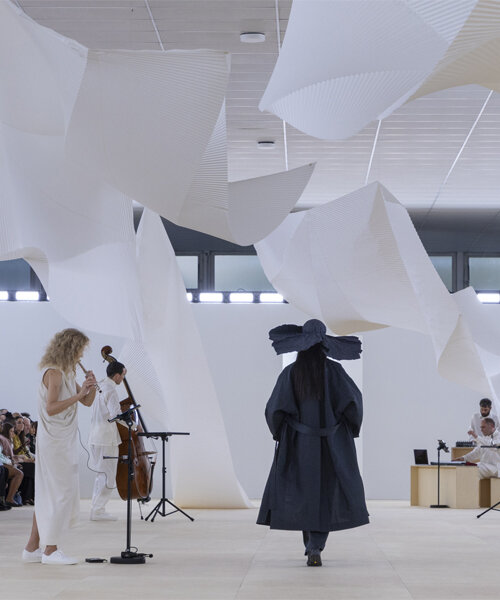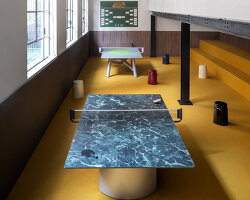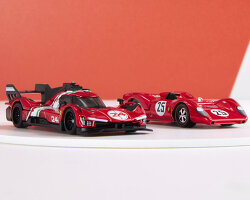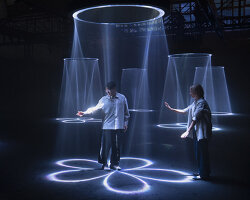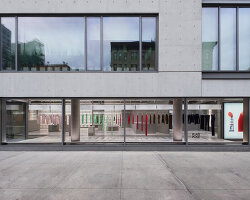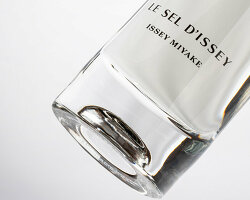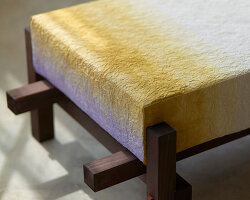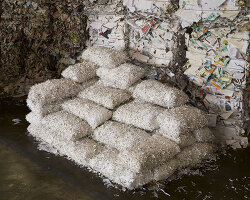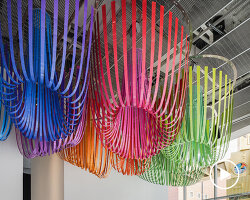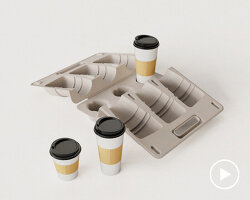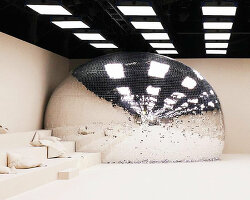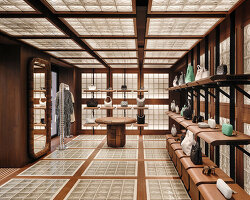issey miyake ss24’s suspended washi paper and clay installation
Paris Fashion Week 2023 was nothing short of captivating. Its biggest runways witnessed incredible scenographies and installations, each immersive the audience in a world of senses and emotions. From Acne Studios’ giant disco ball to Undercover’s glowing terrariums, these performative displays elevated the fashion show experience like never before. Issey Miyake head designer, Satoshi Kondo, took part in this scenographic trend by teaming up with artist Yoshihisa Tanaka for the brand’s SS24 collection — crafting a series of suspended, pleated paper membranes that pulsed and moved to the rhythm of the show. Composed of natural washi paper fibers and a touch of clay, the resulting artwork finds synergy with the collection as it introduces another perspective to its theme, Grasping the Formless. In a recent interview with designboom, Kondo explains how he perceives ‘these pieces of washi paper as something like membranes that move in response to their surroundings, as if they speak to and answer to someone moving around them: the resulting airflow, the sound wave, the humidity, and even the person’s emotions.’
Oozing ephemerality and lightness, the installation ultimately echoes the relationship between a piece of cloth and the person wearing it. The kinetic movements were further elevated in the presence of a live performance by the Belgian orchestra Ictus and a poetic choreography by Nemo Flouret. Read on as Satoshi Kondo and Yoshihisa Tanaka delve deeper into the SS24 show’s artistic concept and material dynamics.
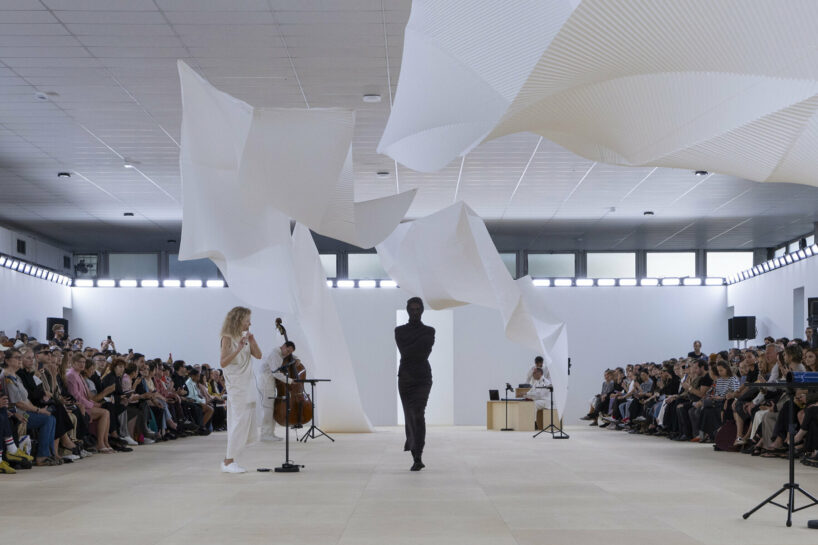
all images courtesy Issey Miyake
interview with satoshi kondo and Yoshihisa Tanaka
designboom (DB): Can you tell us more about your collaboration for the presentation of the Issey Miyake Spring Summer 2024 collection? How did you decide to work together?
Yoshihisa Tanaka (YT): I first started working with Kondo when he became the designer of Issey Miyake (the women’s line), where he asked me to be the art director of the printed media for the collections. Since then, we have been designing and producing printed work on a variety of paper, and it was two collections ago (spring summer 2023) when we began to make something experimental using washi paper as a medium. What is interesting about washi paper is that you can add other fibers/fibrous materials in the pulp that are mixed with water to make the paper. For the presentation of this collection, to find synergy with the theme of clothing relating to the human body as well as the surroundings, I thought about creating an installation composed of large pieces of washi paper, where I experimented with pleating to make the pieces sculptural and airy.
Satoshi Kondo (SK): There is also the synergy between the installation and the original fabrics that we have developed for the collection that use yarn made from washi paper.

Grasping the Formless: Spring Summer 2024 Collection by Issey Miyake
a fluid artwork responding to airflow, sound, and humidity
DB: The set design for the SS24 show is composed of pleated pieces of original washi paper blended with clay. The pieces of paper respond sensitively to their environment, including air flow, sound waves, and changes in humidity Could you explain the concept behind using these materials and how they relate to the collection’s theme?
YT: The washi paper used for the installation is made from plants with a touch of clay, which is related to this notion of taking from the land and returning to it—something that I find part of Issey Miyake’s philosophy. I see these pieces of washi paper as something like membranes that move in response to their surroundings, as if they speak to and answer to someone moving around them: the resulting airflow, the sound wave, the humidity, and even the person’s emotions. There is this connection I find between the installation, the collection theme, the scenography, and the concept of a piece of cloth and the wearer.
SK: I see the installation as an integral part of the presentation of the collection as it complements the presentation for a more comprehensive experience. Mr. Tanaka designed the installation in synergy with the collection theme (from which the scenography is developed), in that the pieces of washi paperwork with the cast are well integrated into the scenography. I also think that pleating the pieces makes them more fluid, flexible, and formless. This is integrated with the performance of the music and the dance to bring to the audience an interdisciplinary and substantial presentation that is more than a runway show.

a pleated paper and clay installation by artist Yoshihisa Tanaka
DB: The installation mirrors the relationship between a piece of cloth and the wearer. Can you elaborate on how this concept reflects the essence of the Issey Miyake SS24 collection and what emotions or sensations you aim to evoke in the viewers through this connection?
SK: To me, Issey Miyake is about designing and making clothing with a sense of ease and fluidity that adapts to the wearer’s body. The concept of a piece of cloth originated from Miyake’s philosophy, as it is how he approached and worked with a piece of fabric. To elaborate, a piece of cloth begins to take form when the wearer’s body is present, where the fabric and the body relate to each other. In that sense, I see this installation as something that represents the relationship between the cloth and the human body: the cloth is, in this case, the washi paper, and the human body, and the movement of the cast.
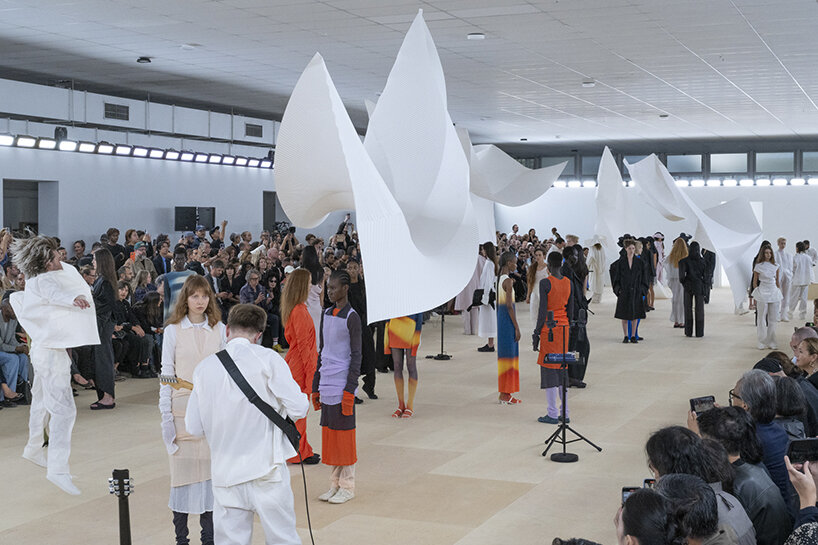
the artwork responded to the show’s movements and performances
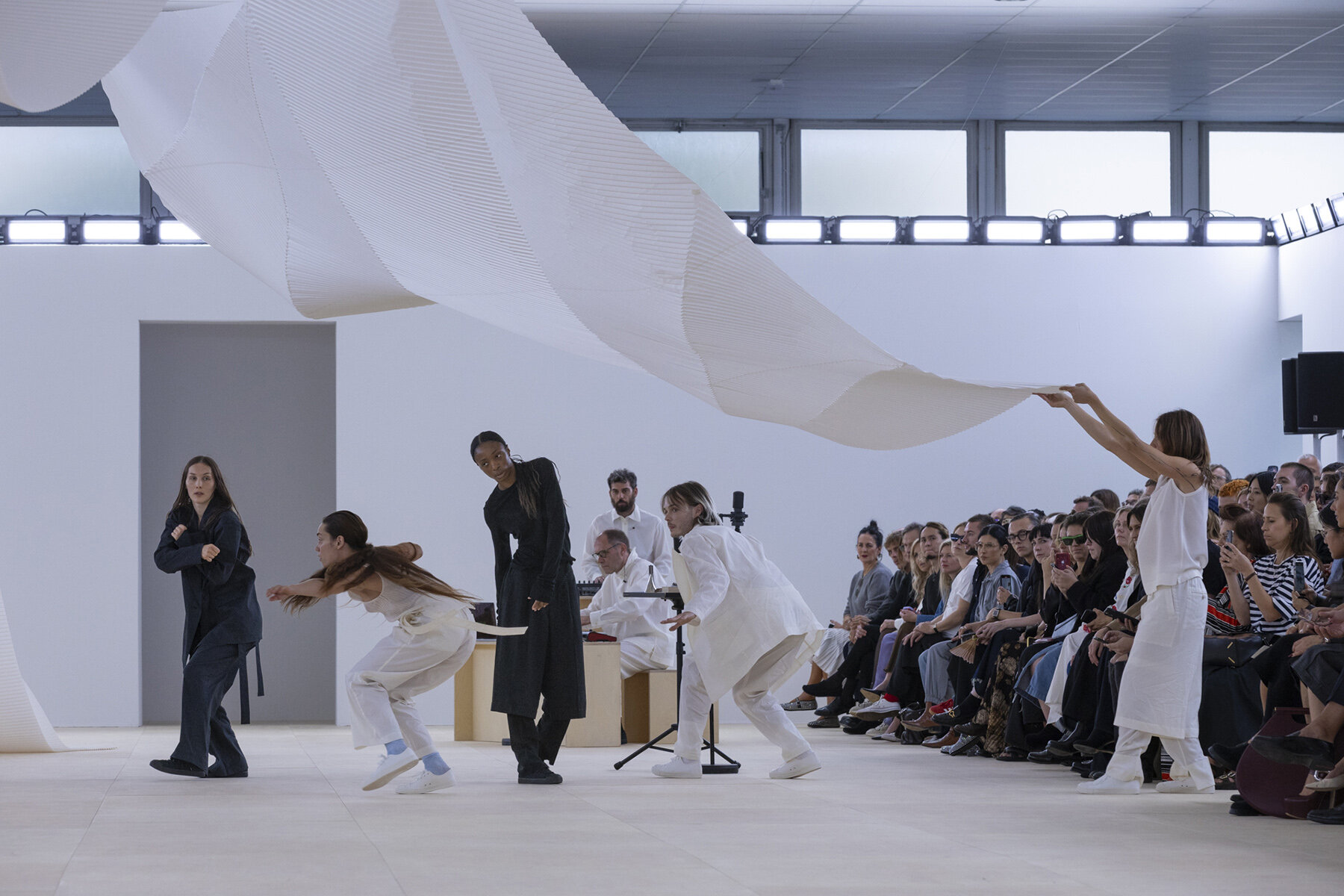

choreography by Nemo Flouret

the installation is perceived as membranes responding to air flow, sound, and humidity
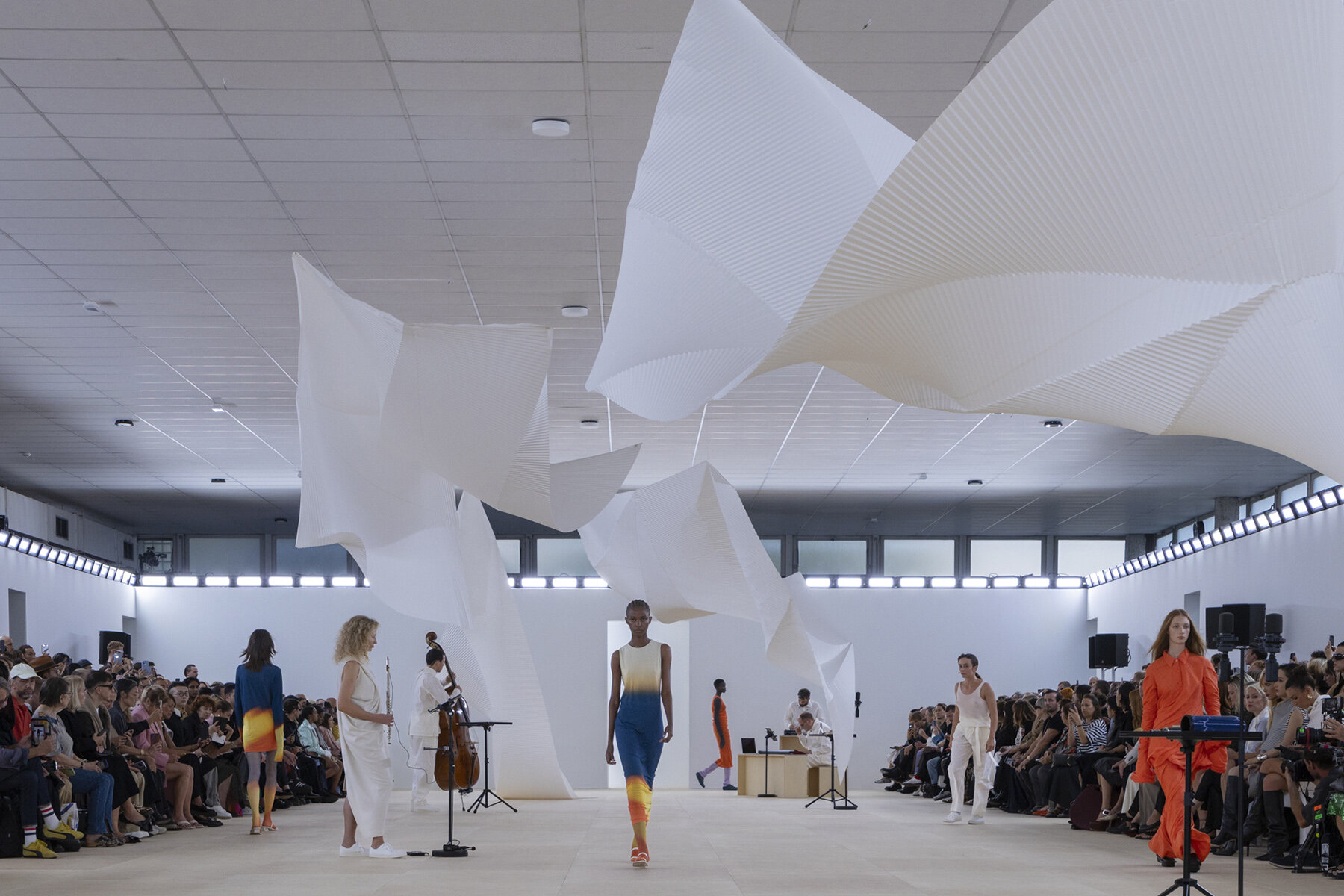
project info:
name: Grasping the Formless | SS24
designer: Satoshi Kondo – Issey Miyake | @isseymiyakeofficial
installation artist: Yoshihisa Tanaka | @yoshihisatanaka
music creation & interpretation: Ictus | @ictusensemble
choreographer & stage artist: Nemo Flouret
styling (jointly with): Brian Molloy | @brian__molloy
sound designer: Ofer Smilansky
hair stylist: Anthony Turner
makeup artist: Anthony Preel for SHISEIDO
set designer: Jean-Philippe Sanfourche
production: Back of the House
performers: Hugo Abraham (double bass), Chryssi Dimitriou (flute), Synne Elve Enoksen, Audrey Merilus, Jean-Luc Plouvier (keyboard), Jean-Baptiste Portier, Margarida Ramalhete, Primož Sukič (guitars), Aure Wachter
